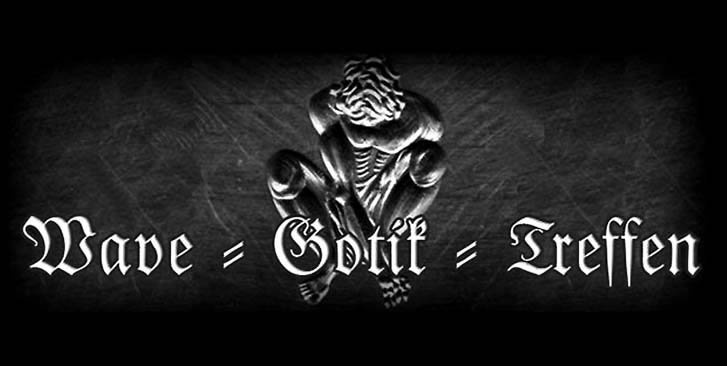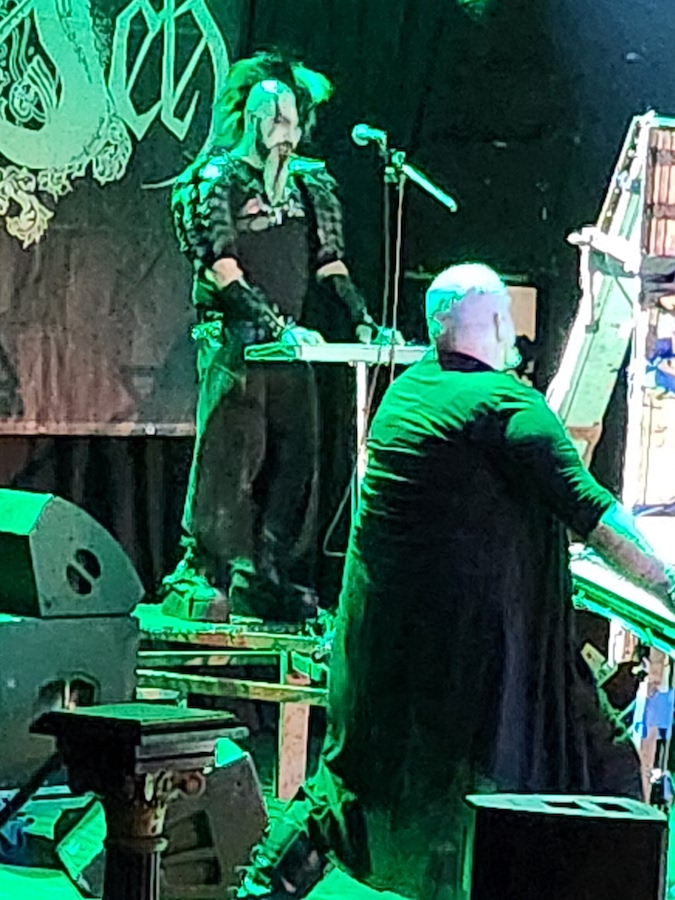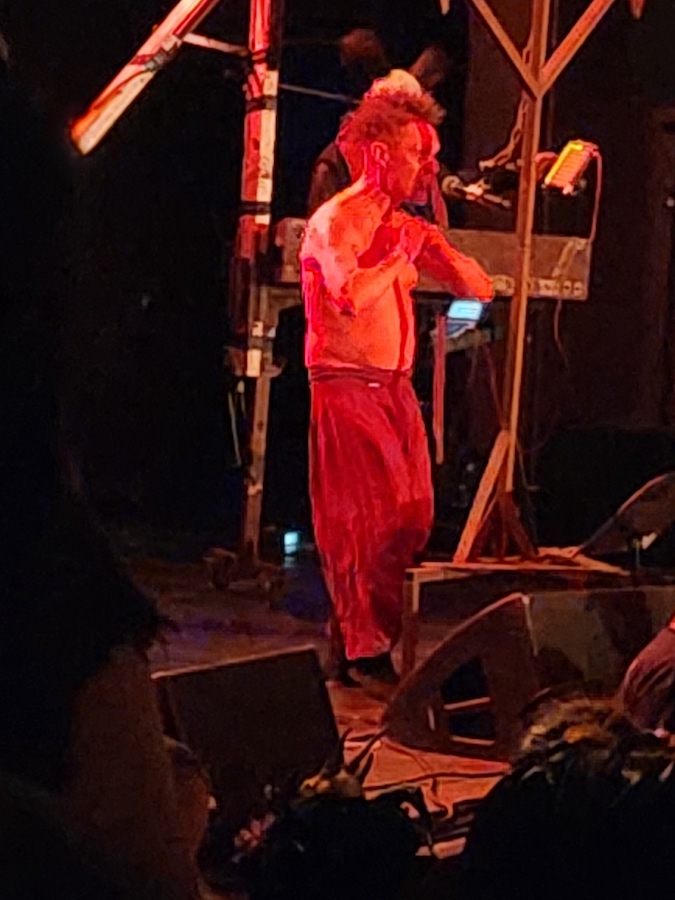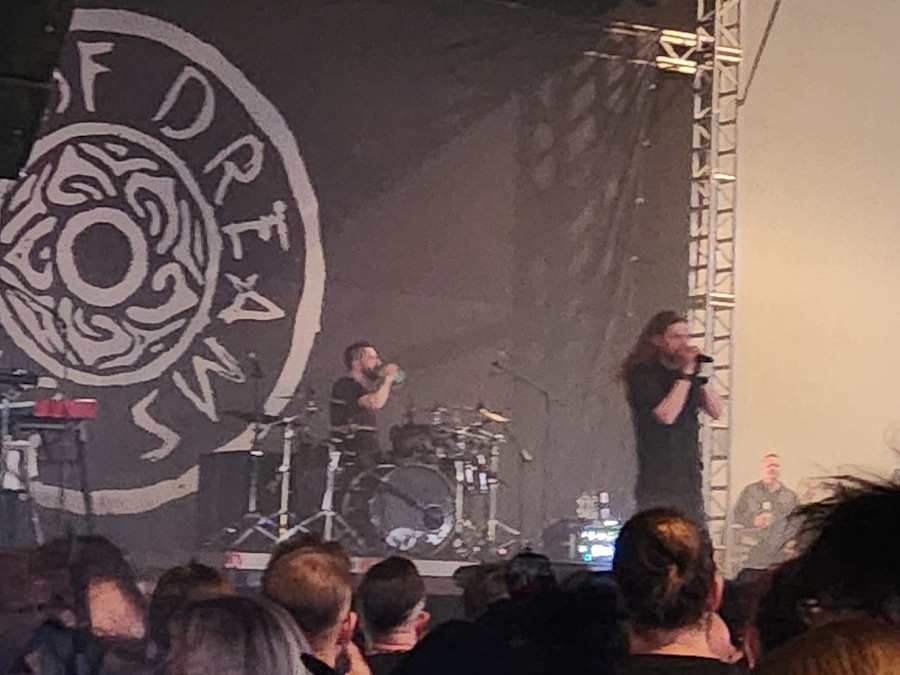This year marked the 30th recurrence of Wave Gotik Treffen (WGT), the world’s largest gothic convention, and thereby the largest festival of gothic, punk and industrial music, held annually for most of those years in Leipzig, Germany – and my fifth time attending. There’s no direct flight from Newark to Leipzig, so I flew into Warsaw and shuttled over to my destination in nearby, eastern Germany for the event that ran one month ago, from May 26 through May 29.
There, for 190 euros, one receives a ticket which, when shown at the adjacent booth, will entitle them to wear a wristband that is irreversibly crimped onto one’s wrist. This band will grant access to all of the 50 or so music venues at WGT (and free rides on the extensive, public transportation system that covers the city). This year, I was joined by approximately 20,000 other fans of dark music and goth culture.
I arrived on May 25. After settling at the Steigenberger Grand Hotel and checking the schedule on the WGT phone app, I started my descent into the dark demimonde inside the lower level of the massive train station, the Hauptbahnhof. There was an art exhibition titled “The Beauty of Horror” on display featuring cartoonish paintings and computer-altered photography with varying degrees of horribleness.
The following daytime was spent taking in the ancient city’s architecture and street art, sculptures, and markets squares. Eye candy was provided by black-costumed attendees in top hats and gowns, some pushing infants – or skeleton facsimiles of infants – around in carriages… or in coffins-on-wheels. Visiting the Museum de Grassi, I was treated to an enormous display of historical period musical instruments including harps, keyboards, violas, violins, cellos, and bass violins under glass.
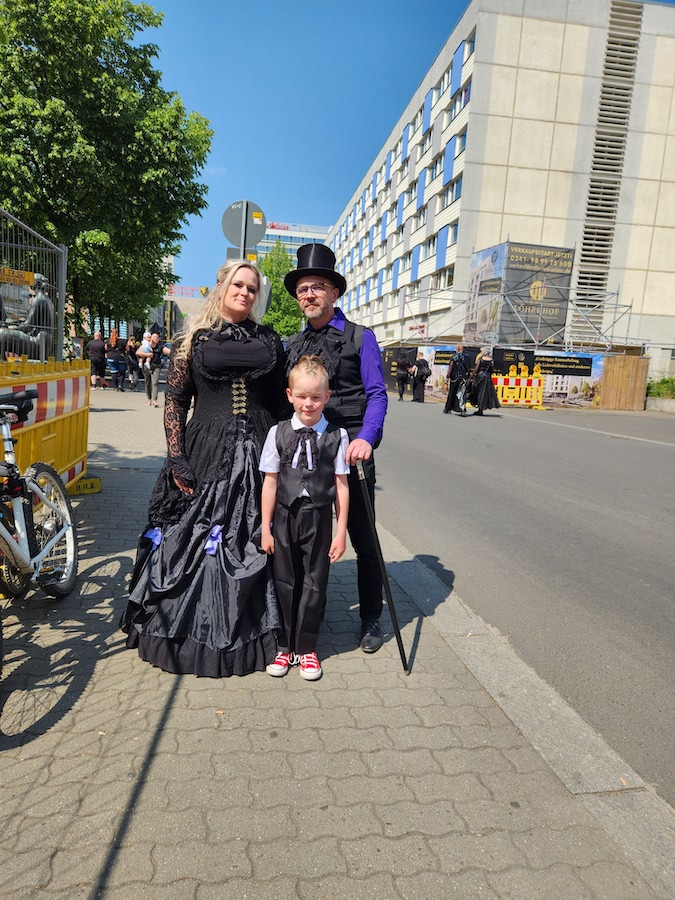
The late afternoon started with a delicious dinner of Saxon country cuisine hosted by German friends at the historic Auerbach’s Keller, the longest-running, continuously-operated restaurant in all of Europe, and the incubator – in the early 19th Century – for playwright Johann Goethe’s Faust.
That evening was spent at a music venue called Täubchenthall where Aeon Sable provided the first great entertainment experience. The band had driving rhythms, chime-like guitar splashes, and the crafted vocals of Nino Sable, whose gyrations and contortions on stage were nothing less than acrobatic. I stayed for the following act, defunct-but-resurrected French gothic rock band Corpus Delecti, which I found to be tired and uninspiring. From there I took a tram to the Stadtbad, once a public swimming pool for the East German proletariat, now a music hall. There the photogenic, Australian, one-man-band Buzz Kull was churning out thudding percussion and synthetic minor-key arpeggios at a level of high intensity. Along with fierce vocals, the electro-industrial band was well worth the long wait to get in to see.
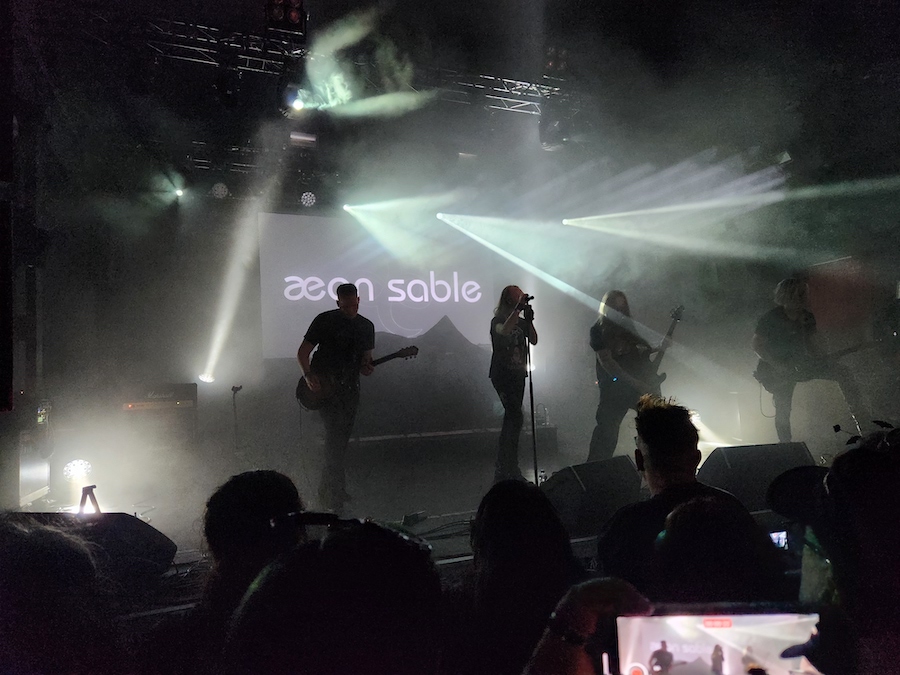
The next day of the convention started with another tram-ride to a free-standing art gallery where a special exhibit of creepy, but high quality art titled “Kunst Liebt Mut” (Art Loves Courage) was squeezed in alongside the gallery’s regular exhibits. That night, at another venue, Felsenkeller, the charming and delightful goth band Ghosting made their umpteenth appearance at WGT having been a regular at the festival since the early 1990s. Next came Grausame Töchter (Gruesome Daughters) who married a heavy industrial sound to shockingly suggestive performance art that included full-frontal nudity.
The high point of this night was provided by German’s deepest darkwave band Das Ich (The Ego), which is fronted by furious, red-dyed Stefan Ackermann and backed by (among others) NJ’s own Damian Plague on keyboards.
On all previous visits to WGT, I always made the shows at Agra – the huge, hangar-like arena just outside of town – the mainstay of my viewing. Outside, one could dine from a large variety food trucks with all kinds of cuisine including – of course – American hotdogs. Inside, besides the main stage, there is a vast separate marketplace with goth/industrial art, attire, and accessories from goggles and crafted jewelry to fetish garments and wearable fangs.
.
.
Although the best was yet to come, the audience was first subjected to the pitiful and uninspired attempts at harsh rock by Video Vision, an unfortunate representative of America. The face-painted front man shamelessly spewed venomous hatred of his own homeland to the audience of Germans, pandering to what he assumed was an anti-American crowd. His words, however, fell flat, evoking neither applause nor vocal affirmation, but embarrassed silence.
Fortunately the night proceeded with three of the best performers that WGT had to offer. The postpunk duo of Lebanon Hanover performed their beloved minimal wave hits and other tracks that are little heard that delighted the audience. Then, German band Diary of Dreams, led by lead singer Adrian Hates, thrilled the audience with powerful vocals and melodious, rhythmic compositions, responding willingly to calls for encores. The night ended with the unusual German band Deine Lakaien. Their beautiful, eccentric tenor vocals sung mainly in English to unique melodies.
There was still another day of music to come, and much, much more of the festival to see – the entire town becomes a giant venue of the WGT – but I was forced, by personal travel demands, to move on and get myself back to Warsaw for another leg of my journey. However, one never forgets the grandiosity and uniqueness of WGT; and in departing, one always contemplates returning the following year.


